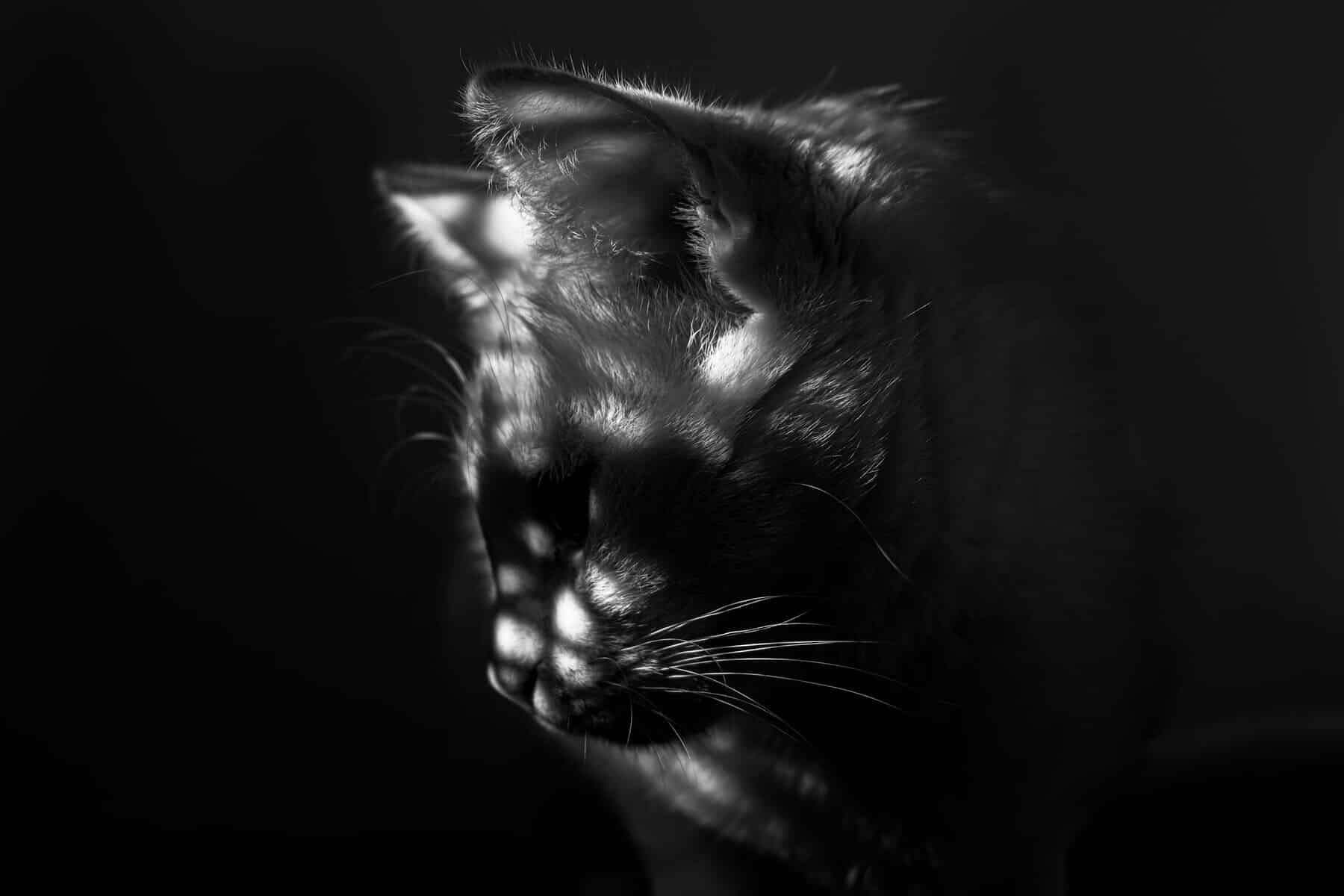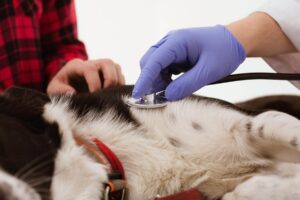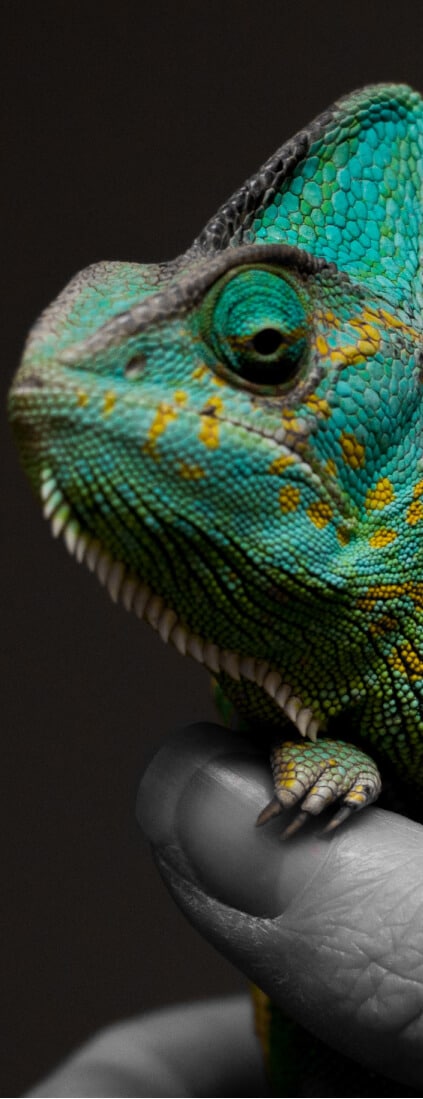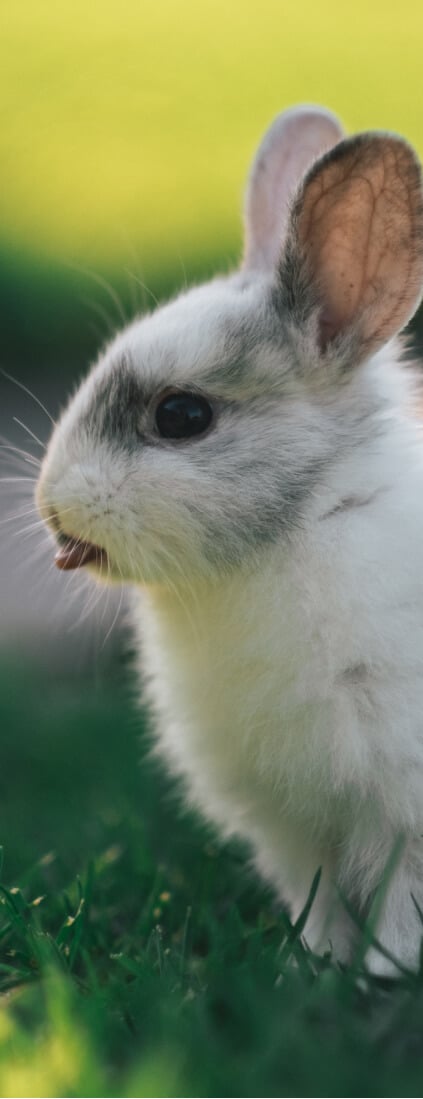Feline Leukemia Virus (FeLV) is a devastating immunodeficiency disease that weakens a cat’s ability to fight infections and can lead to cancer. While some cats with FeLV can live comfortably for years with proper care, the disease is progressive and often fatal over time.
At Compassionate Care, we’ve provided end-of-life care for thousands offamilies since 2009, and FeLV remains one of the most challenging illnesses we see in cats.
Making decisions about a pet’s quality of life is never easy, and we understand how difficult it can be. Some signs that may indicate it’s time to assess your cat’s well-being with a veterinarian include:
- Weight loss and/or inappetance
- Difficulty breathing or persistent respiratory infections
- Chronic infections that don’t respond to treatment
- Visible pain or distress.
How FeLV affects cats
The feline immnodeficiency virus weakens the immune system by changing cellular DNA. At first, many cats seem perfectly healthy. But as their immune system fails, they become vulnerable to infections their body could normally fight off.
Most cats with FeLV will develop serious health issues over time. When the virus takes hold, your cat may experience:
- Anemia that makes them weak and tired because their blood can’t carry enough oxygen
- Respiratory infections that last longer and come back more often
- Small wounds or skin problems that don’t heal properly
- Diarrhea that becomes frequent and hard to control
Cats naturally try to hide signs of illness. Some symptoms are easy to spot, like matted fur or pale gums. Others are harder to detect, like slight changes in appetite or energy level. Pay close attention to any changes in your cat’s behavior, particularly if they occur suddenly or worsen over time and/or treatment does not improve their condition.
FeLV Progression Timeline
Feline Leukemia Virus (FeLV) often goes undetected in its early stages. Most owners first discover their cat has FeLV when they bring their pet to the vet for unexplained symptoms like recurring infections, lethargy, or weight loss.
After diagnosis, the disease typically progresses through several stages:
- Initial Stage (First 4-6 weeks): Many cats show no obvious symptoms as the virus establishes itself in the bone marrow.
- Early Progressive Stage (2-6 months): Cats may go through cycles of getting sick and recovering as their immune system starts to weaken.
- Advanced Stage (6+ months): Infections become more common and harder to treat, with ongoing health problems and a noticeable decline in your cat’s overall well-being.
- Terminal Stage: Severe symptoms like constant pain, extreme weight loss, or trouble breathing significantly affect your cat’s daily life. At this point, it’s often time to have a conversation with your vet about their quality of life and end-of-life care.
Treatment Choices
When your cat is diagnosed with FeLV and their health begins to decline, you may face some tough decisions about their care and quality of life. While there’s no cure for FeLV, there are treatments that can help manage symptoms and keep your cat more comfortable.
These treatments may include:
- Antibiotics for infections that occur as the immune system weakens
- Pain medications to maintain comfort and mobility
- Fluid therapy to prevent dehydration and support kidney function
- Blood transfusions when anemia becomes severe
- Nutritional supplements and appetite stimulants to help maintain weight
As the disease progresses, it’s important to balance the benefits of treatments with your cat’s overall comfort. Some treatments may extend their life but could also cause stress due to frequent vet visits or medications.
Work closely with your veterinarian to determine which options will genuinely improve your cat’s quality of life, focusing on their comfort and happiness.
Quality of Life Decisions
Making quality-of-life decisions for a cat with FeLV is incredibly emotional and challenging. While there’s no perfect formula, you don’t have to rely solely on gut feelings. Key indicators can help guide you through these difficult decisions.
A helpful tool for assessment is a modified version of the HHHHHMM Quality of Life Scale, developed by Dr. Alice Villalobos, a veterinary oncologist specializing in palliative and hospice care. This scale provides a structured way to evaluate a pet’s well-being across seven key factors:
Daily Assessment Areas:
- Hurt – Is your cat showing signs of pain from lymphoma or other FeLV-related cancers? Are they struggling to breathe due to chest infections?
- Hunger – Have they lost significant weight despite appetite stimulants? Are they refusing even their favorite foods?
- Hydration – Can they drink normally, or is dehydration constant due to fever and infections?
- Hygiene – Are they too weak to groom themselves? Are mouth ulcers making self-care painful?
- Happiness – Do they still respond to attention and show interest in surroundings, or are they constantly hiding?
- Mobility – Can they reach their litterbox and food dishes, or is weakness from anemia limiting movement?
- More Good Days – Are infections becoming more frequent with shorter recovery periods between episodes?
Tracking these specific symptoms with the HHHHHMM Scale (Villalobos, 2008) provides a structured way to assess your cat’s quality of life. If multiple areas show a rapid decline—especially breathing difficulties or severe lethargy due to anemia—it may be time to discuss end-of-life care with your veterinarian.
Source: Villalobos, A. (2008). “The HHHHHMM Quality of Life Scale.” OVMA Conference Proceedings.
Choosing Between Natural Death and At-Home Euthanasia
When your cat reaches the end stage of FeLV, you may face a decision between natural death and euthanasia. While natural death might feel like the more natural option, it often involves significant suffering for cats in their final days.
Common signs include labored breathing, extreme weakness, and pain, which can cause considerable distress.
Euthanasia, on the other hand, provides a peaceful and painless passing, allowing you to prevent unnecessary suffering and say goodbye in a calm, loving way.
| Natural Death | Euthanasia |
| Can involve significant pain | Peaceful, painless passing |
| May cause suffering for days or weeks | Quick and gentle |
| Risk of severe, unmanaged symptoms like labored breathing or organ failure | Controlled process |
| Timing is unpredictable, which can prolong distress | You can plan and prepare |
| May require emergency vet visits to manage symptoms | At-home options available for a familiar, comforting environment |
At-Home Euthanasia: A Peaceful Goodbye
At-home euthanasia allows your cat to spend their final moments in the comfort of their familiar surroundings. There’s no stressful car ride, no unfamiliar smells, and no cold exam table—just the peace of being in their favorite spot, surrounded by family.
- No stressful travel or strange environments
- A calm, unhurried atmosphere
- Family and other pet family members can be present for support
If you’re in Portland OR and if you have questions or need guidance, we’re here to provide compassionate support and walk you through the process.
Learning from Real FeLV Stories
Every FeLV journey is unique, filled with challenges, heartbreak, and moments of love. Here are real stories that shed light on the unpredictable nature of this illness and the resilience of cats and their owners:
“My cat went from playful and happy to very ill in just 5 days. Making the euthanasia decision was devastating, but seeing him so weak and frail helped us know it was time.” This family’s experience also underscored the importance of testing littermates, as difficult decisions can come unexpectedly.
Poppy’s Surprise Resilience (via Newsweek):
Diagnosed with FeLV and anemia, 3.5-year-old Poppy was given “a week at most to live.” Yet, two weeks later, she was playing like nothing was wrong. Her owner shared: “She surprised everyone by acting like her old self, even with her condition.”
Insights from TheCatSite Forums:
Long-term FeLV caregivers highlight the unpredictability of the disease. One shared: “Some cats are chronically ill with constant sniffles, while others are pictures of health. I’ve had some that passed before their first birthday, but I also have cats living beyond 3-5 years. Each cat is different.”
Common coping strategies shared across these communities include:
- Joining FeLV support groups for guidance
- Keeping a daily log of symptoms and good days
- Working closely with a trusted veterinarian
- Creating special memories while your cat feels well
- Having an end-of-life plan before it’s needed
- Seeking emotional support when needed
Remember that there’s no universal timeline—focus on your cat’s quality of life and trust your instincts about their wellbeing.
Many owners say their greatest comfort came from knowing they gave their cat the best possible life, however long or short.
Frequently Asked Questions
What happens in the end-stage FeLV?
In advanced FeLV, the virus spreads to the cat’s bone marrow and becomes permanently established. At this stage, they become highly vulnerable to infections and other health complications.
Can cats recover from FeLV?
Unfortunately, there is no cure for FeLV, but many cats can live comfortably with proper care and support. Some cats with strong immune systems may suppress the virus and show few symptoms for years. Regular veterinary checkups, good nutrition, and quick treatment of secondary infections can help maintain their quality of life.
Why is euthanasia often recommended?
Euthanasia is often discussed because FeLV can lead to significant suffering in its advanced stages. However, every case is different. Some cats live happily for years after diagnosis, while others decline quickly. The decision should focus on your cat’s comfort and quality of life, not just the diagnosis itself.
Caring Through the Final Stages
Watching for changes in their quality of life is crucial, as cats naturally hide their pain. Acting sooner rather than later can prevent them from enduring unnecessary suffering in their final hours.
Support is available during this difficult time. Local pet loss support groups, online FeLV communities, and grief counseling can help you navigate your emotions. Your veterinarian can also provide resources specific to your area.
In Portland, we at Compassionate Care provide 24/7 in-home pet euthanasia services, allowing your cat to stay comfortable in familiar surroundings during their final moments. We also offer aquamation as a gentle alternative to traditional pet cremation. If you have questions or need guidance, we’re here to support you through this process.
















